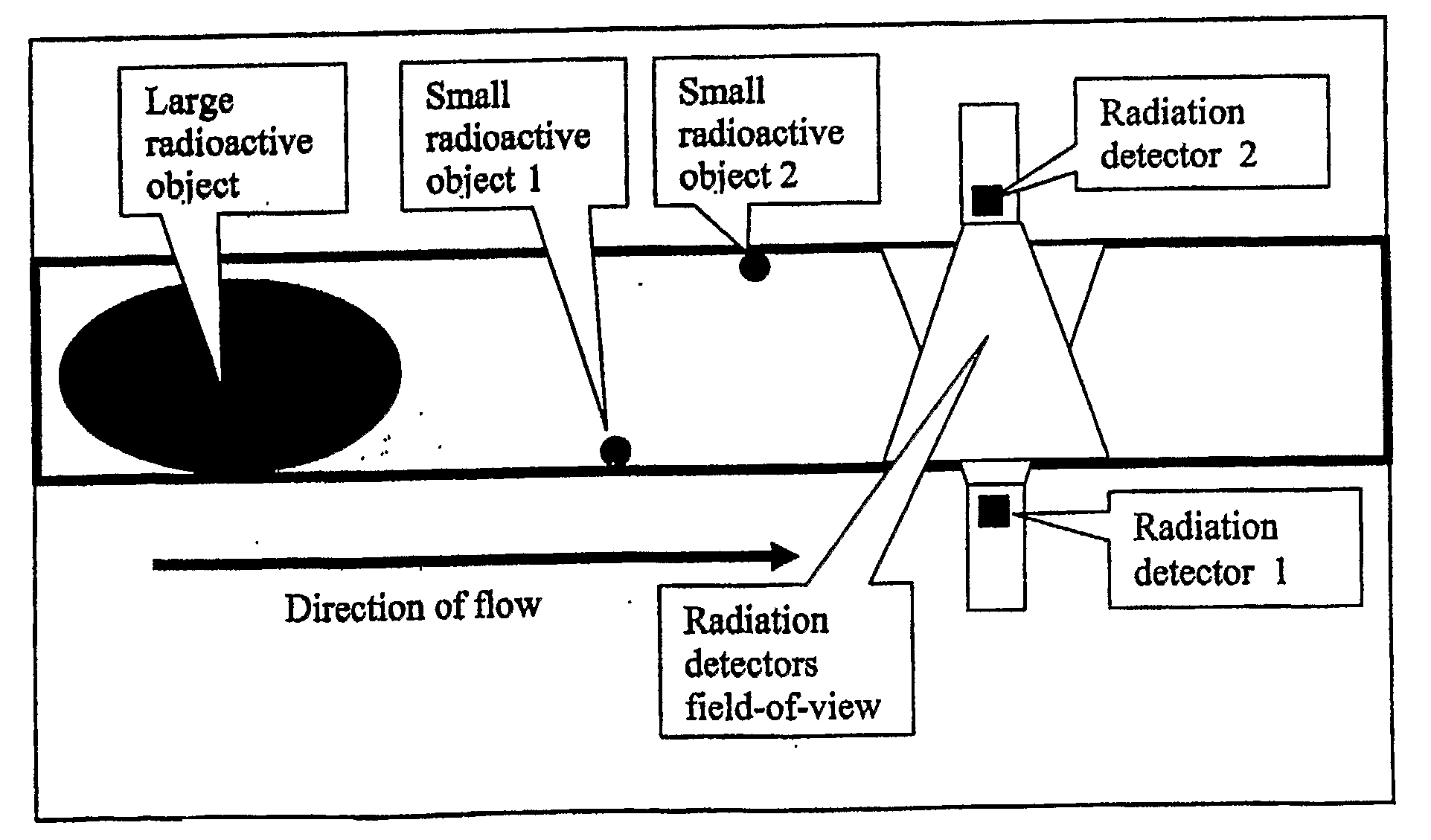Maximum Entropy Signal Detection Method
- Summary
- Abstract
- Description
- Claims
- Application Information
AI Technical Summary
Problems solved by technology
Method used
Image
Examples
Embodiment Construction
[0018]Since an a priori understanding of what combination of sample window and detector grouping and energy window provides the optimal sensitivity is not possible, testing is conducted at all reasonable combinations of these items. Possible detector groupings, for example where 3 detectors are used, include 1; 2; 3; 1 & 2; 1 & 3; 2 & 3; and 1 & 2 & 3. A sample analysis window is established, based on the upper bound signal change rate, referred to as a Basic Interval. Analysis windows are established as integer multiples of the Basic Interval, from a single Basic Interval to the longest window made necessary by the lower bound of the signal change rate. In practice, each detector acquires units of data for Basic Intervals. In the case of spectroscopy detectors, multiple energy regions may be defined. A matrix of the combinations of detector groupings, sample windows, and energy windows is established. An appropriate statistical detection threshold is tested for each combination. As...
PUM
 Login to view more
Login to view more Abstract
Description
Claims
Application Information
 Login to view more
Login to view more - R&D Engineer
- R&D Manager
- IP Professional
- Industry Leading Data Capabilities
- Powerful AI technology
- Patent DNA Extraction
Browse by: Latest US Patents, China's latest patents, Technical Efficacy Thesaurus, Application Domain, Technology Topic.
© 2024 PatSnap. All rights reserved.Legal|Privacy policy|Modern Slavery Act Transparency Statement|Sitemap


